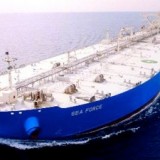It’s impossible to divine anything concrete from the flurry of interesting chatter surrounding Enbridge’s embattled 1,100 km Northern Gateway Pipeline proposal. Alternate routes, Asian energy experts laughing at our stupidity, Enbridge as a straw man to help push through another pipeline to the US…Much of it coming via rumours, hypotheses, and veiled political innuendo.
But one thing it does indicate is a sudden shift in the once-predictable narrative connected to Enbridge’s project.
Up until recently, the story was all about a stand-off between the world’s biggest pipeline builder and stubborn First Nations and environmentalists in BC opposed to the project. The company and its political boosters maintained it was good for the economies of Western Canada, would provide oodles of person-years of employment and a bituminous shot to our GDP.
If they could just get us skeptical citizens and First Nations to get that through our thick skulls – and stop worrying about the threat of spills, in spite of the company’s dismal track record.
As the storm has brewed over the past year and a half, the company has focused its efforts on shoring up political support and wooing First Nations with increased economic incentives. Postmedia’s resident corporate/oil industry apologist, Barbara Yaffe, was issuing free lectures to aboriginal leaders as recently as a couple weeks ago, advising them to suck it up, get with the times, and get onside this oil pipeline project, as well as a highly contentious mine proposal at Fish Lake in the Chilcotin region.
The political strategy seemed to be working – with the exception of the Clark Government’s coy avoidance of outright support for the pipeline of late (even they can read polls and see how unpopular the concept is in BC – better to sit on the sidelines than say something printable in support). The issue figured prominently at recent meetings between the country’s provincial energy ministers and premiers – and Alberta’s energy minister Ron Liepert has been an enthusiastic torch bearer for the project.
With a fresh Harper majority in Ottawa, it would seem the political conditions are right for Enbridge.
But on every other front, the company is, well, getting its butt handed to it. Their image woes now extend to major international press, including National Geographic, ABC News and the New York Times.
And so it is that rumours and hypotheses implying the pipeline is in real trouble (or should be) begin to spread.
All of a sudden, we have 3 – count ’em – relatively new proposals for getting Alberta Tar Sands crude to tankers on the north Pacific Coast. One by rail to Prince Rupert, one a spur off a proposed KinderMorgan pipeline expansion, and the other floated just this week in a Sun column by Barbara Yaffe.
Ms. Yaffe’s now signing a different tune – suggesting that all the controversy from the Enbridge line could be avoided by shifting to a new scheme from a little-known Vancouver consulting company called G Seven Generations, Ltd. The company is apparently involved in a plan to move bitumen by train from Alberta to Valdez, Alaska (yes, the same Valdez of Exxon infamy) – one would presume through the Yukon, though that detail is omitted in Yaffe’s column.
Yes, perhaps this $20 Billion pipeline on rails (almost 4 times the projected cost of the Enbridge line) is the answer. Ms. Yaffe certainly seems to think it should be a breeze. Just as, I’m sure, Enbridge thought about its pipeline only a few short years ago.
Or maybe KinderMorgan – the company stealthily trying to slip by the public with a massive expansion (potentially totalling over 800,000 barrels/day of new Tar Sands capacity) will build a spur off its Trans-Mountain Pipeline east of Prince George and follow a very similar corridor as Enbridge to a new tanker terminal in Kitimat (how they think this proposal will be music to people’s ears following a defeated Enbridge line with essentially the same flow of oil through the same path is a mystery). The company floated the spur on its website earlier this year.
Or could the bitumen be carried on CN rail lines to the Port of Prince Rupert?…
Then, just this week we read in a column in the Tyee by Dr. Michael Byers an account of a candid conversation he claims to have had at a recent international conference in Hawaii, shedding yet new light on the subject.
Byers says he overhead a number of high-level Asian energy players mocking us silly Canadians for building a pipeline to our Pacific Coast, ostensibly to carry bitumen to Asian countries that have no use for it – owing to a severe lack of refinery capacity to deal with the problematic black sludge. The man Byers is speaking to is “the chairman of a Singapore-based consulting firm that operates at the highest levels of the global oil and gas industry.”
This energy consultant tells Byers:
“‘The Gulf of Mexico coast is the only place in the world with any significant capacity for handling bitumen. That’s because it has refineries equipped to handle heavy oil from Venezuela. If the Asians buy any bitumen from Canada, they’ll insist on a very steep discount, because they’ll have to ship it to the Gulf of Mexico, too.’
He chuckles. ‘But we don’t tell the Canadians this straight-out. We write a report for them.'”
Byers relates more of their conversation, as he asks the consultant:
“‘But what about the Northern Gateway?…Enbridge is a major player. Surely they would realize that there’s no market in Asia?’
‘Enbridge is a pipeline company, not an oil company,’ he replies, taking an even closer look at me. ‘They’ve promised to find a market, and nothing more. They don’t care if it’s at a discount.’
‘So you’re saying that Northern Gateway doesn’t make economic sense,’ I studiously repeat.
He nods emphatically. ‘If the Canadians were smart, they’d build the capacity to refine all their bitumen at source, so as to ship a much more valuable product to Asia and elsewhere. But there are only a handful of upgraders in Alberta — and their capacity is actually going down.'”
So the Asian market will take Canadian bitumen, but only at a “steep” discount – which completely contradicts one of Enbridge’s main justifications for the project: that it will enable Canadian oil companies to fetch a higher dollar for Tar Sands crude on the international market (which typically pays a little more than the West Texas-based crude exchange for North American oil).
The upshot, according to Byers’ consultant, is that the Enbridge Northern Gateway is primarily functioning as added pressure on US regulators to approve the proposed 3,200 km Keystone XL pipeline from the Tar Sands to refineries on the US Gulf Coast. In the wake of two serious spills in the States from the pipeline’s existing sister line, the Keystone Pipeline, this latest proposal form TransCanada Pipelines is meeting unexpected opposition from environmentalists and political forces in Washington as the Sate Department deliberates the project’s future.
The idea is that the possibility of a competing export route to Asia will heighten pressure for our southern neighbours to pass the Keystone XL.
Does all this second-hand speculation portend the end of Enbridge’s pipe dream, or are these rumours of its death – as Mark Twain once said – greatly exaggerated?
The coming months, in the lead-up to the public hearings for the project at the National Energy Board, should provide some interesting new chapters to this saga.





